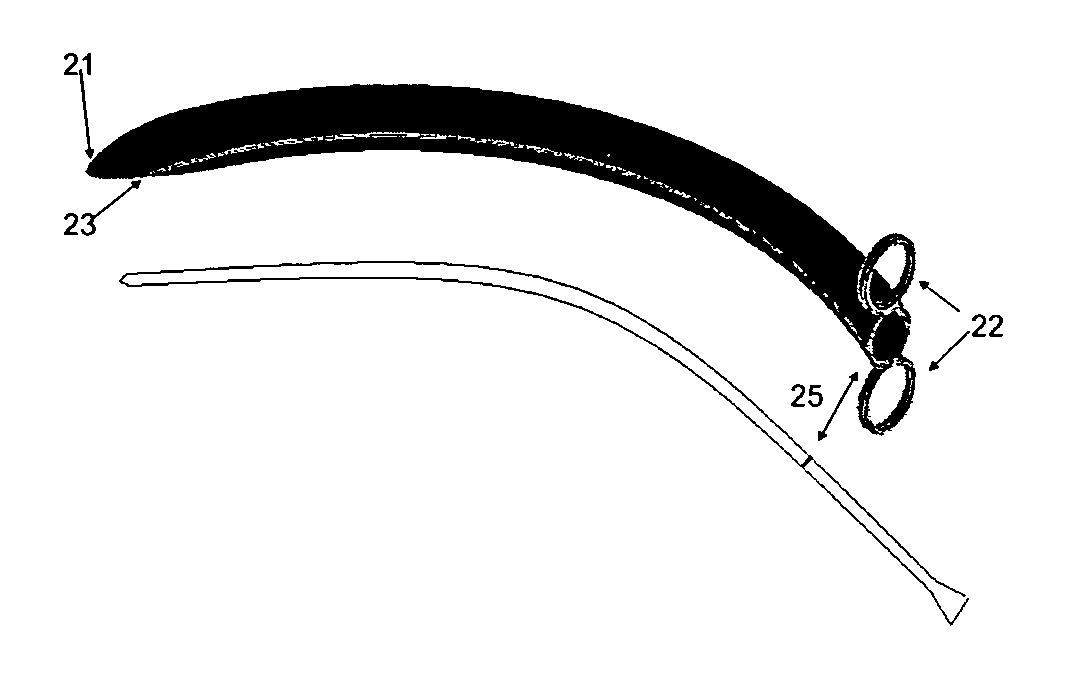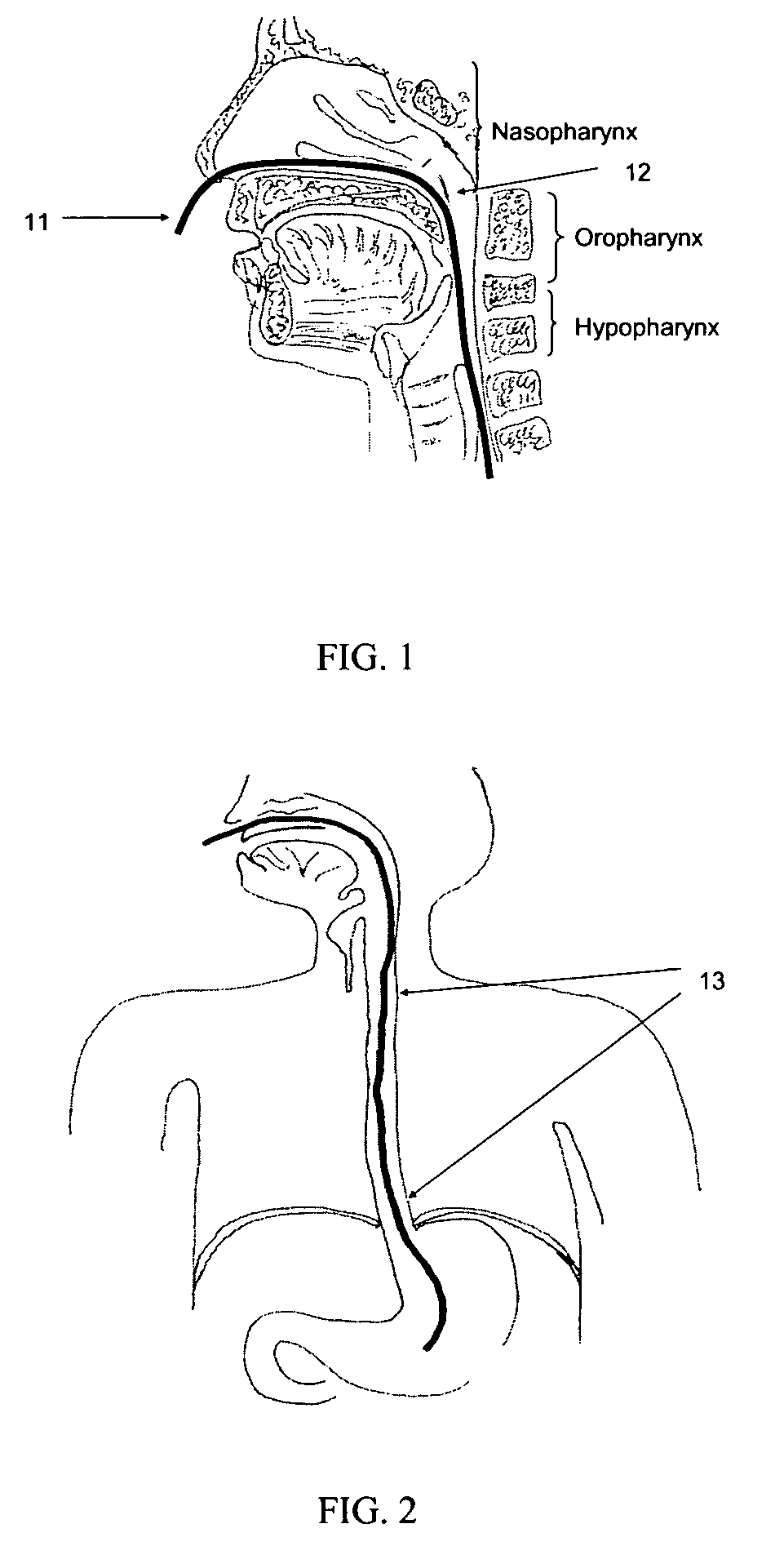Nasopharyngeal sheath for nasogastric intubation
a technology for nasogastric intubation and nasogastric catheter, which is applied in the field of medicine, can solve the problems of difficult and uncomfortable procedures, inability to maneuver, and rigidity of the nasal passage mucosa, and achieves the effect of comfortable and safe way of inserting and minimizing the risk of mucosal injury
- Summary
- Abstract
- Description
- Claims
- Application Information
AI Technical Summary
Benefits of technology
Problems solved by technology
Method used
Image
Examples
Embodiment Construction
[0023]The anatomy of human nasopharynx and oropharynx is shown in FIGS. 1 and 2. The bold line (11) indicates the path of a nasogastric tube. As it is demonstrated a straight tube placed in the nose will hit the posterior nasopharyngeal wall (12) before it is pushed down towards the oropharynx. After entering the esophagus the path of a nasogastric tube to the stomach is almost a straight line (13). The conventional nasogastric intubation technique involves negotiating the curve of the nasopharynx. The injury usually occurs in the nasal mucosa or more severely at the nasopharynx.
[0024]Referring to FIGS. 3, 4, and 5, the nasopharyngeal sheath has a curve to correspond to the natural curve of the human upper aero-digestive tract. It is made of medically approved rubber or latex. This material is flexible enough to cause minimal damage to the surrounding mucosa. Also by using the ordinary medical lubricators the nasogastric tube can slide through them with minimal friction. Its distal ...
PUM
 Login to View More
Login to View More Abstract
Description
Claims
Application Information
 Login to View More
Login to View More - R&D
- Intellectual Property
- Life Sciences
- Materials
- Tech Scout
- Unparalleled Data Quality
- Higher Quality Content
- 60% Fewer Hallucinations
Browse by: Latest US Patents, China's latest patents, Technical Efficacy Thesaurus, Application Domain, Technology Topic, Popular Technical Reports.
© 2025 PatSnap. All rights reserved.Legal|Privacy policy|Modern Slavery Act Transparency Statement|Sitemap|About US| Contact US: help@patsnap.com



